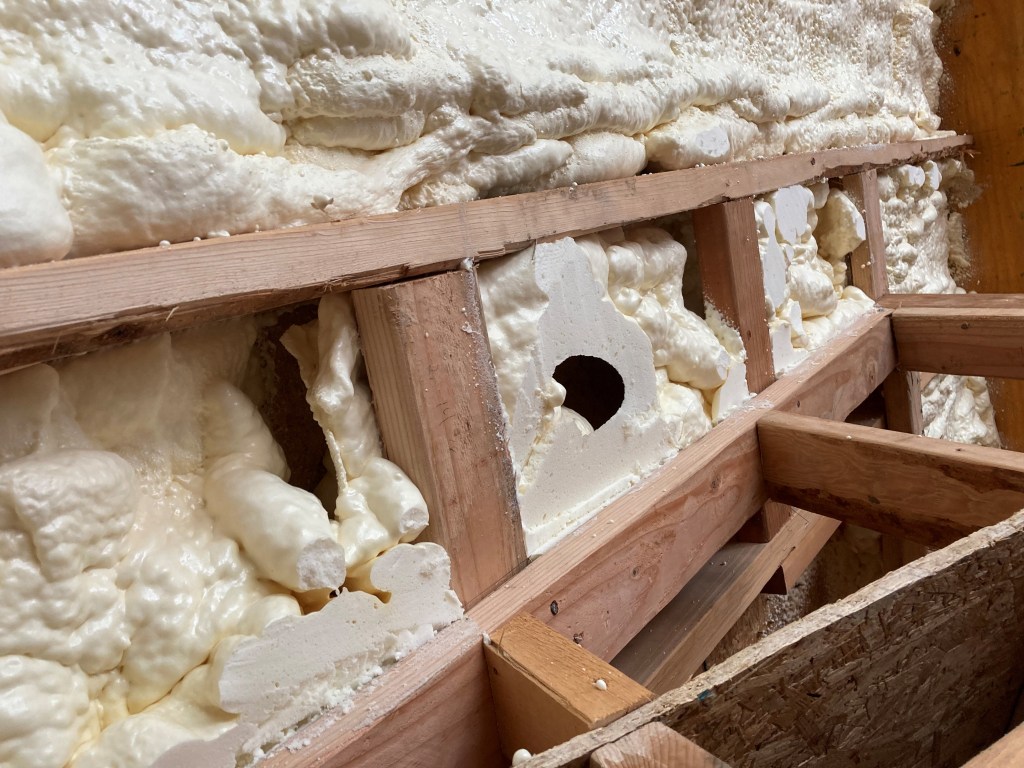Many builders address unvented “hot roofs” by simply choosing to install spray-foam insulation to the underside of the roof deck and relying on it to achieve sufficient R-value and manage airtightness in one step. There are a lot of homes built this way, and I understand that it is possible for this to be successful. Over the last decade we have used this approach ourselves when the design required it, but after locating numerous failures in these installations, we simply aren’t confident in this approach in our market, and we seek to avoid it in favor of less risky alternatives.
The failures we have found have run a gamut: On our last five attempts with reputable installers, we have found numerous voids on visual inspections; incomplete application where the installer had apparently anticipated greater expansion than what actually occurred (example at right); mix-ratio issues, resulting in improperly cured foam; delamination or pulling away from framing members, which created gaps where air and vapor can travel and accumulate; and, of course, many cavities simply being underfilled so that the desired R-value is never achieved. We’ve had many insulators tell us that roof decks need open-cell foam, so that leaks in the roof can flow through to the drywall beneath and signal their presence to clients, and we’ve had just as many tell us that closed-cell foam is the only way to go on a roof deck, so that water vapor from the interior can’t get into the foam, be trapped under the roofing materials, and rot the roof sheathing.
I tend to defer to Building Science Corporation and the wisdom of Joe Lstiburek, who has been on record since 2014 saying that the closed-cell foam is less risky at roof decks in cold climates, that open cell is too vapor open for use at roof decks, and that the whole “it saves your roof by showing you the leak” thing is bogus, as there’s no data to support it. Given all that, I will simply say that while I believe spray foam can be a path to success, I haven’t seen it executed successfully in my market, and I will avoid that risk whenever I can.
